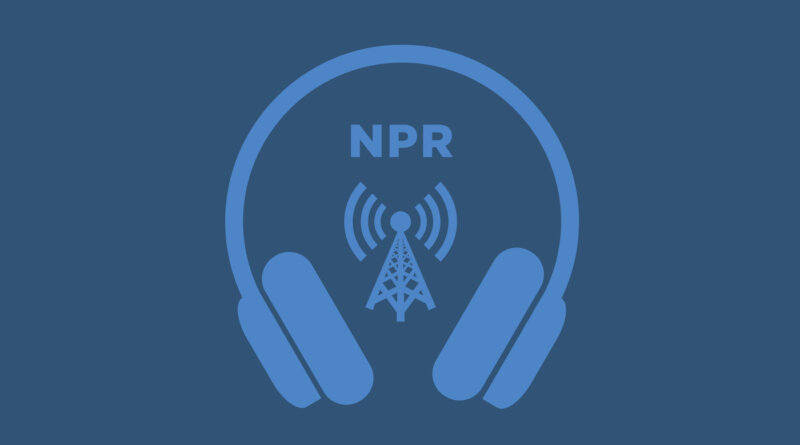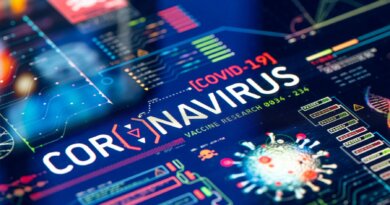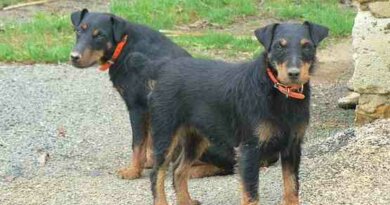Conservationists rush to vaccinate California condors as avian flu strikes : NPR
Conservationists are rushing to vaccinate critically endangered California condors against deadly avian flu. Ashleigh Blackford of the U.S. Fish and Wildlife Service is overseeing the effort.
ARI SHAPIRO, HOST:
There’s a vaccination effort underway in California, not for COVID or the ordinary flu. In fact, the patients are not even human. They are some of the largest birds in the world – California condors. Ashleigh Blackford is the California condor coordinator for the U.S. Fish and Wildlife Service, and she is overseeing the effort to vaccinate these endangered birds against the avian flu. Welcome to ALL THINGS CONSIDERED.
ASHLEIGH BLACKFORD: Thanks, Ari. It’s so nice to be here.
SHAPIRO: How do you vaccinate a California condor? I’m picturing people climbing up cliffs with syringes to find enormous nests. Like, how does this work?
BLACKFORD: Well, great question. And thankfully, that’s not what we need to go through. Our California condor recovery program actually has an intensive monitoring effort of our wild birds, and that includes annual trapping events where we do health checks on the birds. And so that will be our prime opportunity to vaccinate for avian influenza, if we take that next step.
SHAPIRO: And so are these birds just getting vaccinated on their annual checkups? Because there’s real urgency here. I mean, more than a dozen have died since March. The condors are already critically endangered. You’re facing some time pressure.
BLACKFORD: We are. So – but first, before we start vaccinating the wild condors, we are implementing a trial. And that’s what USDA approved, was for us to initiate a vaccination trial. First, we are starting with surrogate birds, which are going to be black vultures. We want to make sure that this vaccine that was developed for poultry is going to be safe for our wild birds. So we’re testing it first in black vultures. And then we will vaccinate some of our captive birds as part of that trial as well. And then once we’ve gone through that kind of safety trial, seeing an immune response from our birds, then we’re going to flip and start vaccinating the wild birds.
SHAPIRO: I think many people are aware of what a heroic and successful effort it was to bring the California condor back from the brink of extinction. Are you afraid that that progress could be undone by the avian flu right now?
BLACKFORD: I mean, this definitely feels like a setback, in particular for our southwest flock in Arizona. I mean, they have lost almost 20% of their wild flock. I will say, though, luckily, big picture for this program, the strategy around California condor recovery is that we have multiple populations on the landscape and that by doing that, you have what the Fish and Wildlife Service workers refer to as redundancy on the landscape. And by having these multiple populations, you build resiliency to stochastic events like this, like a virus outbreak.
SHAPIRO: We’re talking about this iconic, majestic species that is critically endangered. But avian flu is affecting wild bird populations all over the country. Is this just a microcosm of what the bird population of the United States faces right now? I mean, how serious is this outbreak?
BLACKFORD: Well, we are seeing this virus impact wild populations at a unprecedented level. Why this particular strain seems to be having such high mortality rates and in all sorts of species, you know, we really can’t say. It’s just kind of the luck of virus evolution, I would say. But we have seen these virus outbreaks before. You know, early in the 2000s, West Nile came through. And they are novel viruses that wild birds are not exposed to. And so you can see these large spikes of mortality. And ideally, over time, we kind of reach an equilibrium with those viruses, and the birds gain natural immunity, and they’re able to rebound. It’s populations like the California condor that are very small, that don’t have that robust population – we just take a really big hit because we don’t have the depth of a population to allow for that natural immunity to build. And so that’s really one of the reasons why we want to vaccinate – is because we don’t have numbers that can sustain the time that it might take for these populations to gain an immunity.
SHAPIRO: Wildlife biologist Ashleigh Blackford is the California condor coordinator for the U.S. Fish and Wildlife Service. Thank you so much.
BLACKFORD: Thank you.
Copyright © 2023 NPR. All rights reserved. Visit our website terms of use and permissions pages at www.npr.org for further information.
NPR transcripts are created on a rush deadline by an NPR contractor. This text may not be in its final form and may be updated or revised in the future. Accuracy and availability may vary. The authoritative record of NPR’s programming is the audio record.




